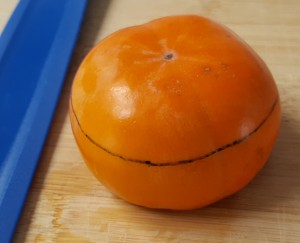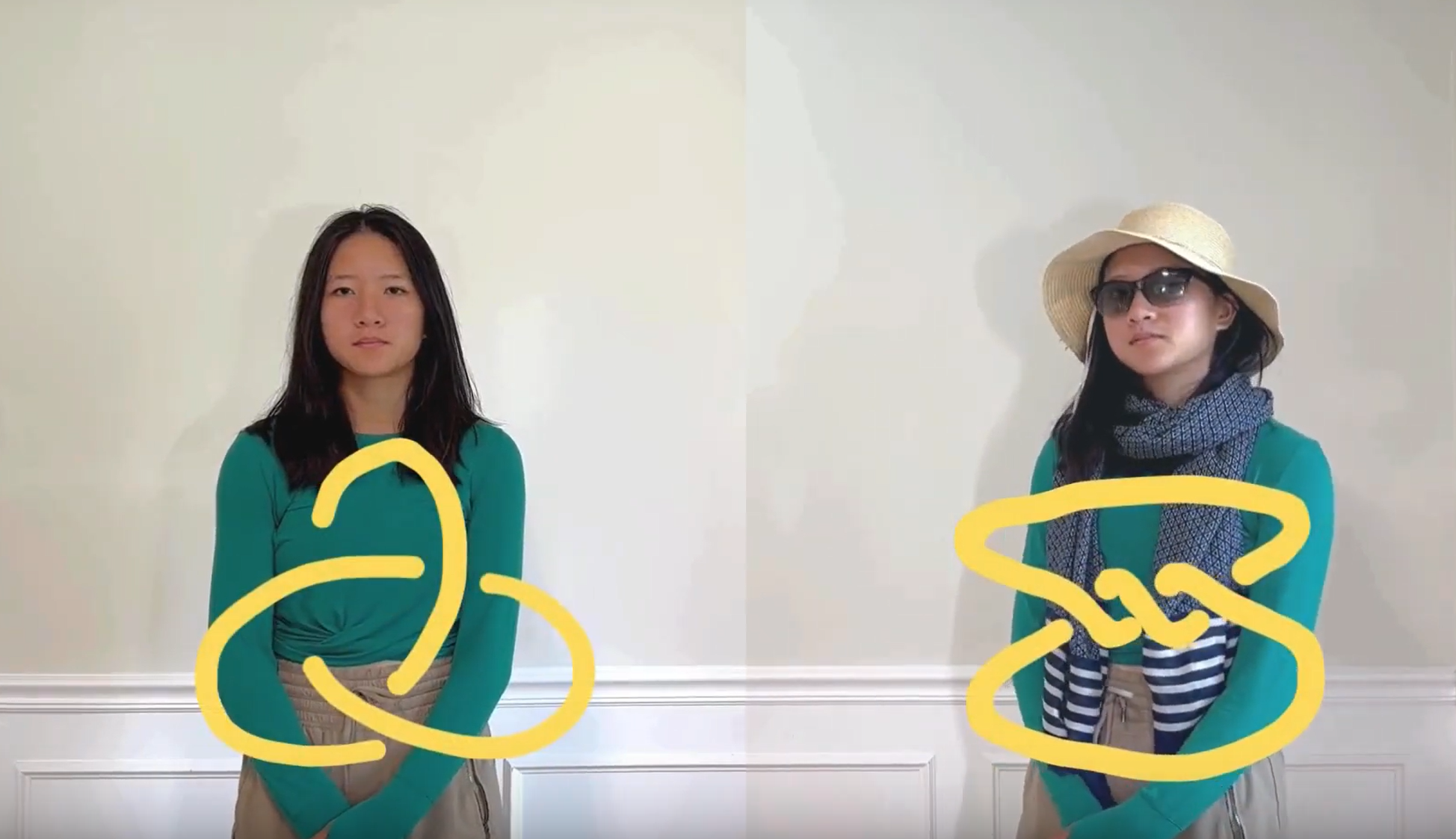Math Monday: Polyhedral Fruit, Part One
[sharethis]
Of course, the classic cornucopia-stuffers are the fruits and vegetables of the season’s harvest, so inspired by this classic Math Monday article and Vi Hart’s apple carvings, the next few weeks will offer up a big basketful of new polyhedra (and lots of new carvable edibles). This week we will focus on just one shape, taking it step-by-step in detail to get warmed up for the upcoming carvings, which will roughly ramp up in intricacy.  The series will focus on vertex-transitive polyhedra and their duals, with maybe a Johnson solid or two thrown in for good measure.
The series will focus on vertex-transitive polyhedra and their duals, with maybe a Johnson solid or two thrown in for good measure.
First, to keep your carvings looking fresh, slice yourself a bunch of lemon slices and remember that every time you expose a newly-cut surface, rub it liberally with lemon to prevent browning.
 Any good sculptor lets the raw material help guide what the finished sculpture will be, and geometric fruit carvers are no exception. To start with, take this cute persimmon. It suggests a simple, squat polyhedron, so the ideal choice is a regular hexagonal prism. This target shape is a vertex-transitive polyhedron; authors are divided over whether to consider it an Archimedean solid, but it is certainly at least a Johnson solid.
Any good sculptor lets the raw material help guide what the finished sculpture will be, and geometric fruit carvers are no exception. To start with, take this cute persimmon. It suggests a simple, squat polyhedron, so the ideal choice is a regular hexagonal prism. This target shape is a vertex-transitive polyhedron; authors are divided over whether to consider it an Archimedean solid, but it is certainly at least a Johnson solid. To carve it, we are going to focus first on the large, parallel hexagonal faces. Our first two cuts will be the planes containing those. The first cut is simple; just make a flat slice roughly parallel to the base of the fruit. The nice thing about this cut is that the exact orientation doesn’t matter as long as it’s basically in the right direction; all the other cuts will be measured relative to this first one.
To carve it, we are going to focus first on the large, parallel hexagonal faces. Our first two cuts will be the planes containing those. The first cut is simple; just make a flat slice roughly parallel to the base of the fruit. The nice thing about this cut is that the exact orientation doesn’t matter as long as it’s basically in the right direction; all the other cuts will be measured relative to this first one.
You can think of the hexagonal prism as a section of a horizontal slab that extends indefinitely in two directions; the thickness of that slab, in order for the vertical faces to be squares, is determined by the size of the base hexagon. So once you have made that first slice, estimate what size hexagon will fit comfortably within the boundaries of your fruit over a significant portion of its vertical height. Print out a hexagon of that edge length, for example by using an online tool such as this one. Cut out your hexagon template, and make sure of two things: one, that it fits comfortably within the first cross section of the fruit you cut, and two, that the fruit is taller than the side length of the hexagon you chose, in fact enough taller so that the cross-section at a height equal to the side length of the hexagon will still accommodate that same hexagonal template. You may need to try some smaller or larger hexagons  until you get one that fits comfortably and makes use of the bulk of your fruit. For example, I cut both 2.5-cm and 2-cm (on a side) paper hexagons before choosing the one that fit best.
until you get one that fits comfortably and makes use of the bulk of your fruit. For example, I cut both 2.5-cm and 2-cm (on a side) paper hexagons before choosing the one that fit best.
Once you have settled on the best side length of the prism, make marks at that height all the way around the fruit. (I recommend using food-safe markers, available through specialty cooking or baking supply shops; don’t eat the resulting carvings and scraps unless you do.) Then draw a horizontal line all the way around the fruit connecting those marks, and finally carefully slice through the fruit along that line to produce a horizontal slab with parallel faces, like so. (Note the beautiful internal four-fold symmetry that this cut has revealed.)
(I recommend using food-safe markers, available through specialty cooking or baking supply shops; don’t eat the resulting carvings and scraps unless you do.) Then draw a horizontal line all the way around the fruit connecting those marks, and finally carefully slice through the fruit along that line to produce a horizontal slab with parallel faces, like so. (Note the beautiful internal four-fold symmetry that this cut has revealed.)
Print out two copies of your selected hexagon template, and place one firmly on the cut surface of the fruit (which you rubbed with lemon, right?) — it will tend to adhere as it wicks a bit of the fruit’s juices. Trace each side of the hexagon onto the cut surface of the fruit with a ruler, extending the sides all the way to the edges of the fruit. Also, mark the poisition of each vertex on the bottom of the fruit, and then flip the fruit over and use those marks to line up your other hexagon template exactly with the first one, but on the other side of the fruit.


Trace around the second template, too, and then sight along one of the sides of the hexagon, and from that perspective, draw a vertical line on the side surface of the fruit. Note that when viewed from any other angle, the line will appear curved as shown below, but when viewed along the line of sight of the selected side of the hexagon, will appear perfectly straight vertical.

You’re ready for your first side cut; align your blade with the trace on the top, and guide it along the lines you just drew on the sides. Making the guideline for the next cut is much easier; you’ve now exposed one of the planes of the square faces of the prism, so you can just use a ruler to  draw one of the edges of that first square side, which now acts as one of two guidelines for the cut of the plane of the next square face. The other guideline is of course the trace on the top. In general, it is pretty easy to cut the proper plane for one of the faces when you have two non-parallel guidelines that both lie on that face.
draw one of the edges of that first square side, which now acts as one of two guidelines for the cut of the plane of the next square face. The other guideline is of course the trace on the top. In general, it is pretty easy to cut the proper plane for one of the faces when you have two non-parallel guidelines that both lie on that face.
Continue in this fashion, cutting a plane of one of the square faces, drawing a “newly-exposed” edge of the prism, and then using that as a guideline to cut the plane of the adjacent square face of the prism. Here’s what it will look like when you’re about to make your last cut.
And here’s the completed regular hexagonal persimmon prism. Congratulations! You’ve carved your first edible polyhedron. The next couple of installments will show how to use these basic steps to carve a wide variety of shapes out of a range of different fruits and vegetables.












